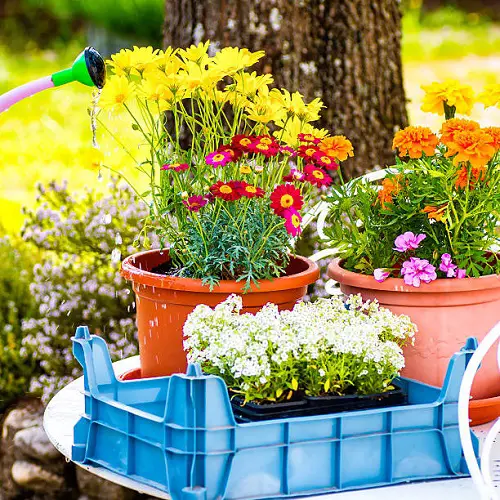Here are some secret tips to get the most colorful flowers in your garden that’ll be your neighbours envy for sure!

Getting the most vibrant blooms for your container and garden is not a rocket science. All you need are a few tips on how to use the right blend of soil, sunlight, and more, to achieve them easily!
Tricks to Grow Most Colorful and Beautiful Flowers
1. Play with the Soil pH

Altering the soil pH might not be the answer to make every flower out there more colorful, but it surely does work for majority of them.
For example, if the soil is acidic (pH below 7), then it can make the blue and purple pigments in the flowers more intense. This works best with hydrangeas, delphiniums, and certain varieties of roses.
On the other hand, if the soil is alkaline (pH above 7), then it can make pink, orange, and red pigments in the flowers more vivid. This works the best with pink hydrangeas and roses.
2. Experiment with Fertilizers
Phosphorus (P) is the key element behind coloration in flowers, so it would be a good idea to look for a blend that has a higher number of it, like 10-30-10 and 15-30-15.
Do make sure that you are following the label for dosage and application.
3. Use Temperature Stress
When the plants are stressed, they respond differently to it, and this may, sometimes, can alter flower coloration in certain species. For example:
- Exposing poinsettias to cooler temperatures (around 60-65°F or 15-18°C) can enhance the coloration their red bracts.
- A temperature range of 50-60°F (10-15°C), can encourage more intense and vibrant colors in snapdragon blooms.
- A mild temperature stress of around 50-60°F (10-15°C) will make sweet alyssum more vivid.
- Primroses get more saturated in the temperature range of 50-60°F (10-15°C).
4. Experiment with Water Stress

If you will start watering the plant slightly less (waiting for 3-4 days, after the topsoil goes a little dry before watering the plant), then it can help to intensify the colors of roses, geraniums, bougainvilleas, hydrangeas, and hibiscus—mostly the flowers that are well accustomed to grow in warm climates.
However, you might have to do it on a trial and error basis to come to a sweet spot, where the plant reacts to it by making its blooms more colorful!
5. Select Flowers that Don’t Fade Soon
Long lasting flowers are always going to maintain their vigour for a longer time, which means, they will appear more vivid and colorful, as compared to the blooms that last for a day or two.
Gerbera daisies, sunflowers, red dahlias, gazanias, blanket flowers, marigolds, petunias and delphinium are some of the best choices that maintain their flowers for a long time.
6. Fertilize with Natural Color-Enhancing Agents
Well, this is can be used as an experiment, and may or may not work with the flowers you have in your collection.
Beet and cranberry juices (Thanks to color pigments cyanidin-3-monoglucoside, peonidin-3-monoglucoside, and cyanidin-3-mono arabinoside in cranberry juice) are best for this job, as they can temporary add color to the flowers.
Dilute any one of these juices with water in 1:1 ratio, and water the plant once in 15-20 days to see the difference. Do note that the sugar content in the juice may attract ants and other pests along with other issues, so be mindful of that.


